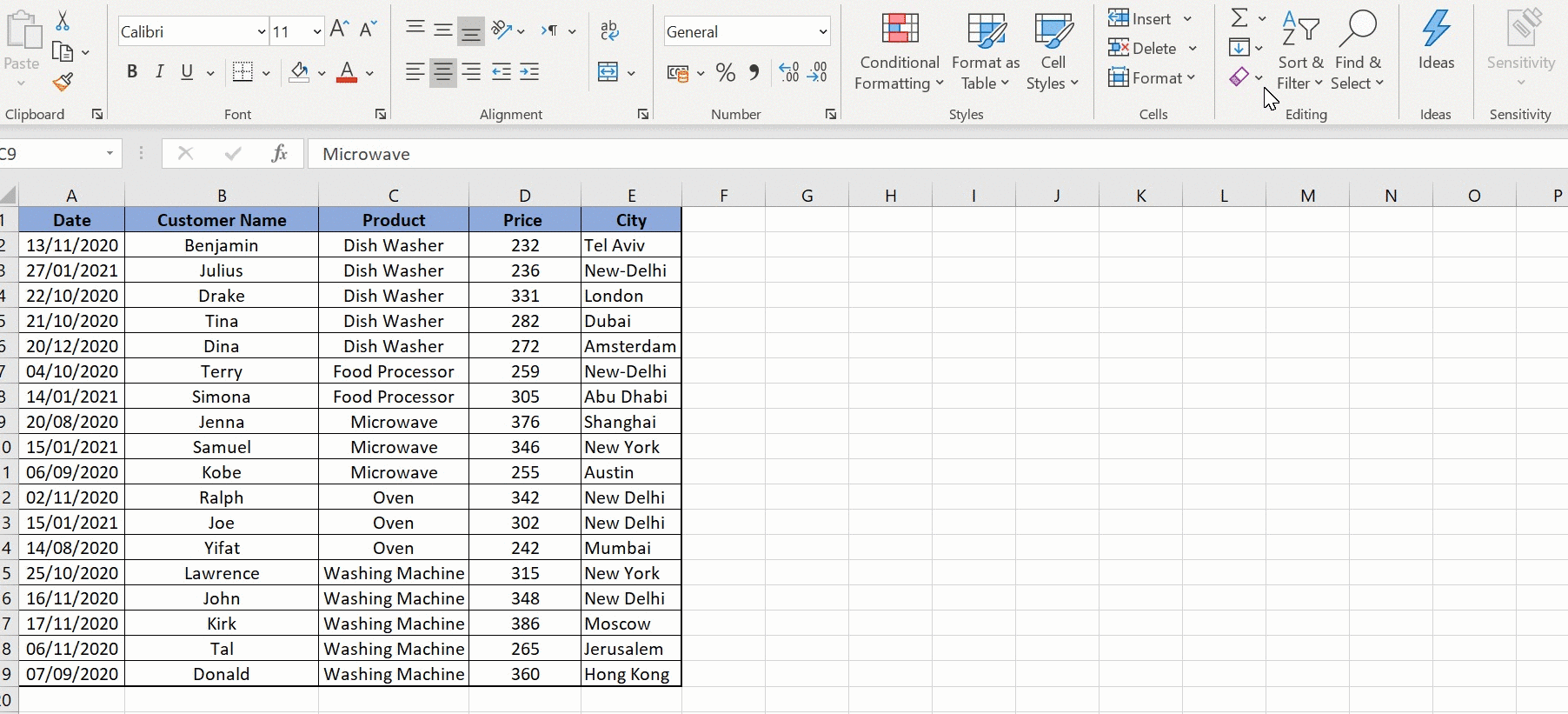5 Ways to Sort Excel Sheet Numerically Fast

Sorting Excel sheets by numerical values can transform a chaotic dataset into an organized, analysis-friendly format. Whether you're dealing with sales figures, inventory counts, or financial data, knowing how to sort these numbers quickly and efficiently is essential for any Excel user. Here are 5 proven methods to sort your Excel sheet numerically in a snap:
1. Using the Ribbon's Sort Feature

Excel's ribbon provides a straightforward way to sort your data:
- Select the column or range of cells containing numbers you wish to sort.
- Go to the Data tab on the ribbon.
- Click on the Sort A to Z (ascending) or Sort Z to A (descending) button in the Sort & Filter group.
🏗️ Note: Ensure your data range includes a header row to prevent accidental sorting of header cells with the data.
2. Custom Sort with Excel's Sort Dialog

For more complex sorting, use Excel's sort dialog box:
- Select your data.
- From the Data tab, click on the Sort button.
- In the dialog box, choose the column you want to sort by in the Column dropdown.
- Select the Sort On option and choose Cell Values.
- Choose either A to Z or Z to A for the order.
- Click OK to apply the sort.
3. Applying AutoFilter

If you frequently sort data in different ways, AutoFilter can be your ally:
- Select your data range.
- From the Data tab, click on Filter.
- Click the dropdown arrow on the column header of the number column.
- Select Sort Smallest to Largest or Sort Largest to Smallest.
4. Using Shortcuts

For speed and efficiency, try these keyboard shortcuts:
- Select the column you want to sort.
- To sort from smallest to largest, press Alt + D, S then A and Enter.
- For sorting from largest to smallest, press Alt + D, S then D and Enter.
5. Using VBA Macro

If you’re a repetitive sorting enthusiast, VBA (Visual Basic for Applications) macros can automate your sorting tasks:
- Press Alt + F11 to open the VBA editor.
- Insert a new module with Insert > Module.
- Paste this code:
- Close the VBA editor.
- Select the data to be sorted and run the macro with Alt + F8, selecting QuickSortColumn from the list.
🤖 Note: Remember to adjust the column number in the VBA code if you want to sort a different column than the first one.
Why Sorting Matters

Sorting your Excel sheets numerically is crucial for:
- Data Analysis: Sorting allows you to identify trends, outliers, and patterns in your data.
- Organization: It helps keep your data orderly, making it easier to locate and compare numerical values.
- Efficiency: Quicker sorting means less time spent preparing data for further work.
In summary, whether you prefer the simplicity of the ribbon, the flexibility of the sort dialog, the convenience of AutoFilter, the speed of shortcuts, or the automation of VBA macros, Excel offers a myriad of ways to sort your numerical data. These methods not only streamline your workflow but also ensure your data remains manageable and meaningful. Mastering these techniques will undoubtedly make your data management tasks much more efficient, allowing you to focus on the insights rather than the arrangement of your data.
Can I sort data that includes both numbers and text?

+
Yes, Excel will sort the numbers first, followed by text in alphabetical order. If the column you are sorting contains both, the numbers will come first regardless of the text.
What if I want to sort multiple columns?

+
In the sort dialog, you can add multiple sorting levels by clicking Add Level to specify the order in which you want the columns to be sorted.
Is there a way to keep related rows together when sorting?

+
Yes, when sorting in Excel, make sure to select the entire dataset. Excel will automatically maintain the row relationships to keep data intact during the sort.



